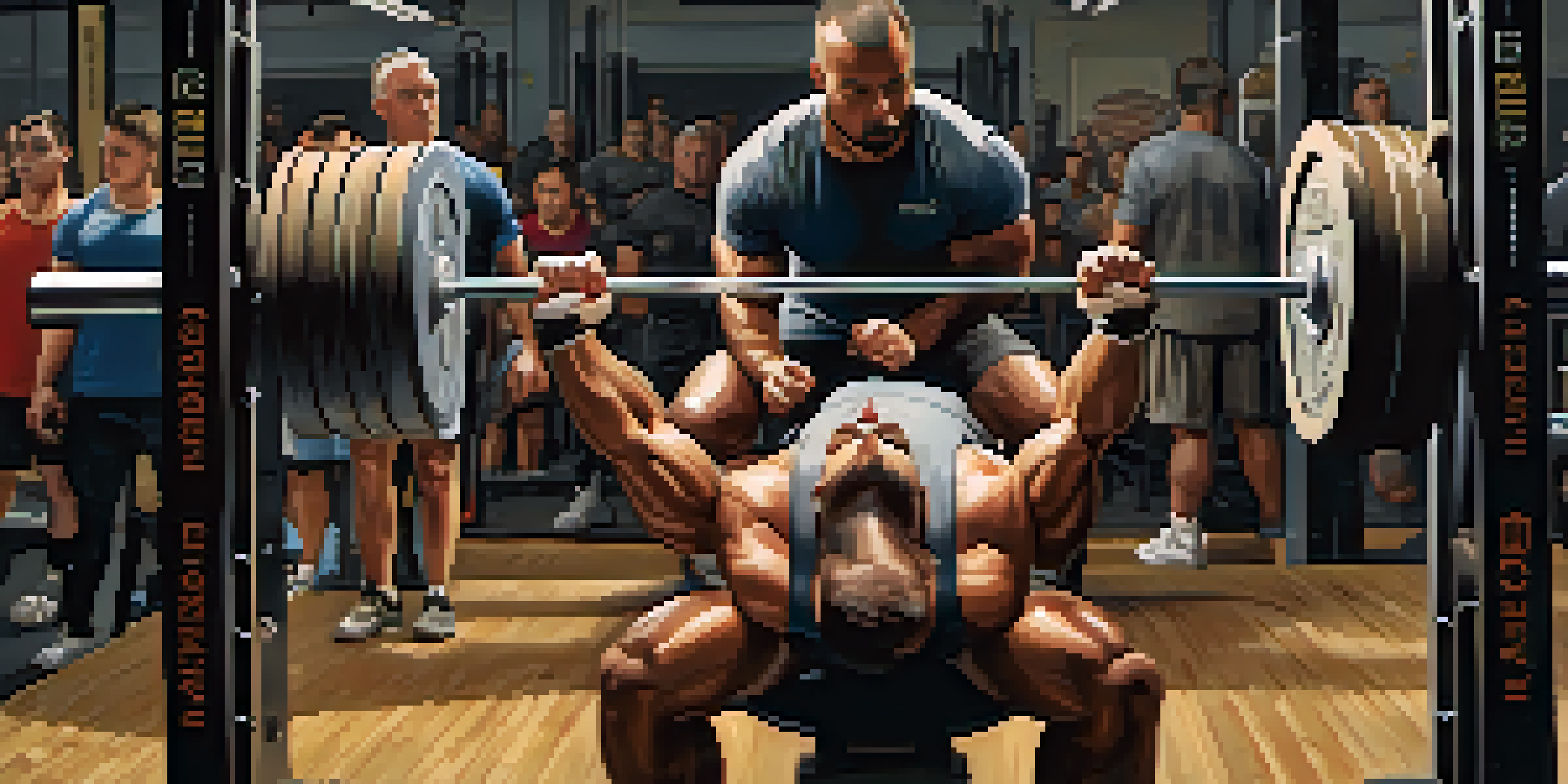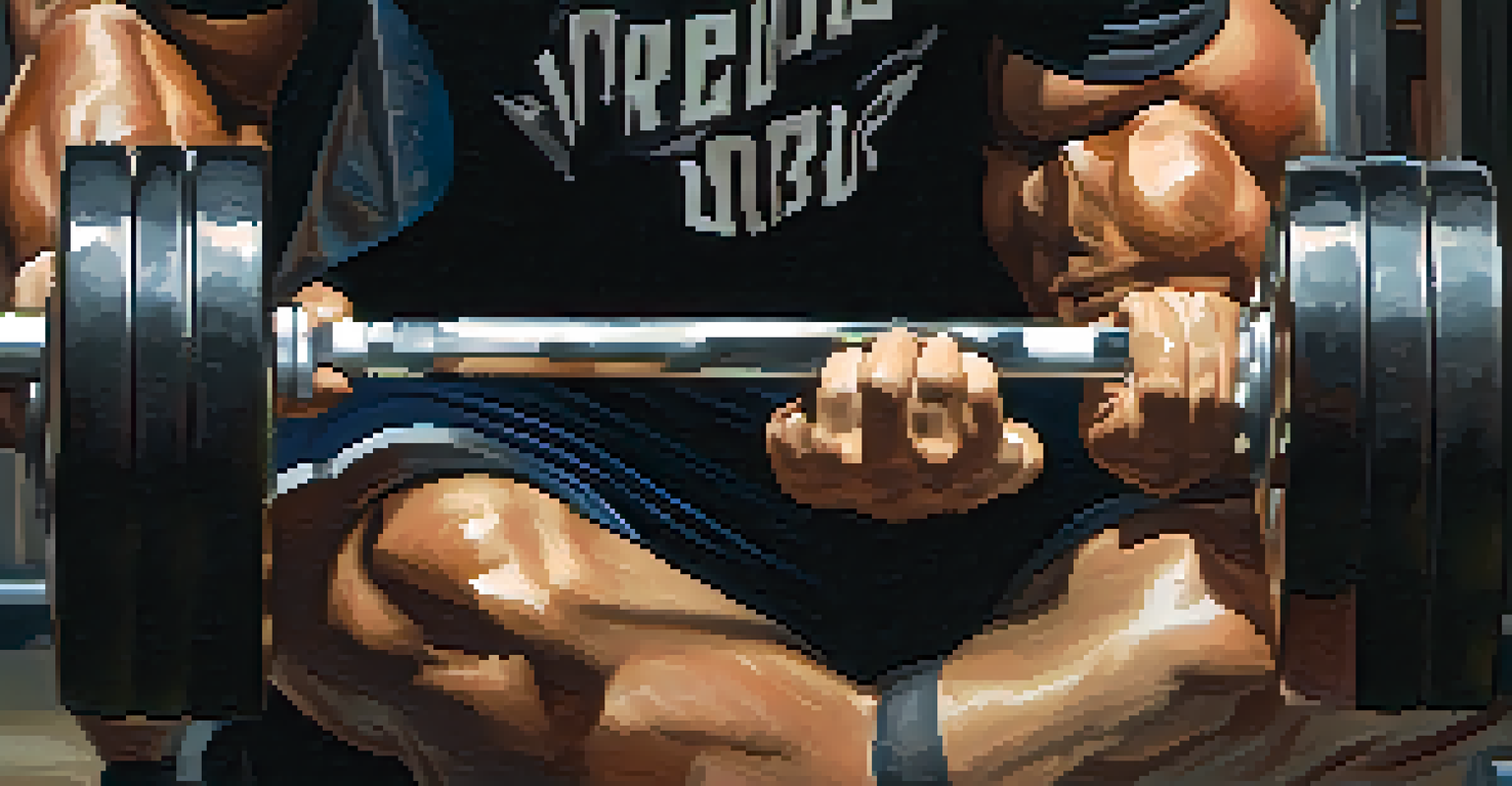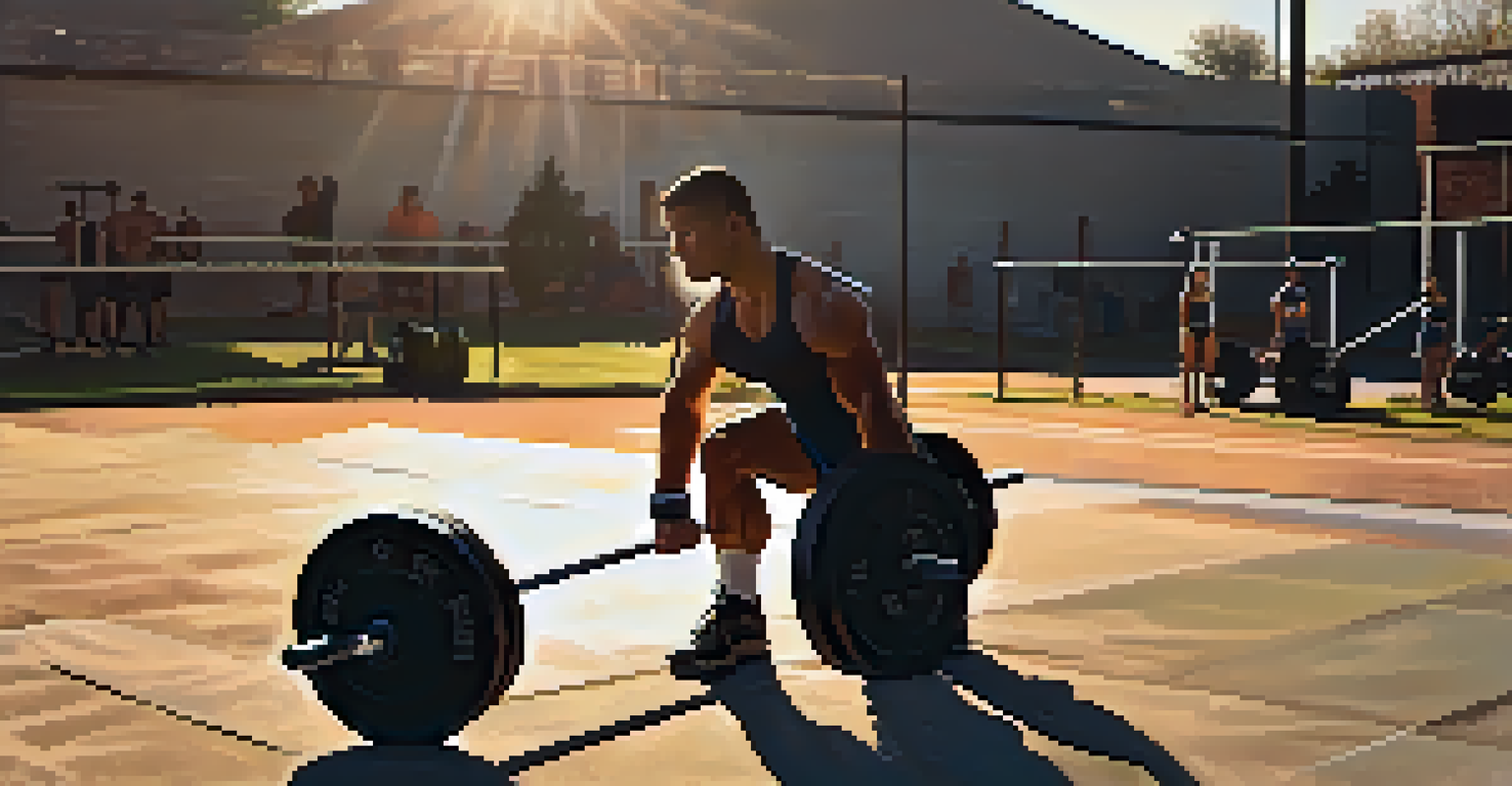Spotting Techniques in Powerlifting: A Guide for Beginners

Understanding the Role of a Spotter in Powerlifting
A spotter in powerlifting is someone who assists the lifter during their workout, ensuring safety and providing support. Their primary responsibility is to help the lifter avoid injuries, especially during heavy lifts. This role is crucial, as powerlifting involves maximal efforts that can lead to accidents without proper supervision.
Strength is a matter of the mind, and a good spotter helps you realize your potential.
The spotter's presence allows the lifter to push their limits, knowing they have someone to rely on if something goes wrong. Beyond safety, a good spotter can also help motivate the lifter, encouraging them to reach their personal best. It's about creating a supportive environment where lifters can thrive.
Understanding this role is vital for beginners, as it sets the foundation for safe lifting practices. This knowledge helps new powerlifters appreciate how teamwork enhances overall performance in the gym. So, if you're just starting, remember that finding a reliable spotter is as important as mastering your lifts.
Key Spotting Techniques for Common Lifts
Different lifts require different spotting techniques. For example, when spotting the bench press, the spotter should stand behind the lifter with a firm grip on the bar, ready to assist if the bar starts to drop. This involves not only strength but also a good sense of timing to ensure the lifter can focus on their form.

For squats, the spotter usually stands behind the lifter, ready to assist by providing support at the lifter's waist or shoulders if they struggle. The key is to maintain a close proximity without interfering with the lift. This technique ensures that the lifter has the freedom to perform while knowing help is just a moment away.
Spotters Ensure Safety in Lifting
A spotter's primary role is to assist lifters during heavy lifts, preventing injuries and fostering a safe training environment.
Deadlifts are a bit different, as a spotter doesn't directly assist with the lift. Instead, they can help by observing the lifter's form and readiness, ready to step in if something seems off. Each lift has its nuances, and understanding these differences is essential for effective spotting.
How to Communicate Effectively While Spotting
Communication is the backbone of effective spotting. Before the lift, spotters and lifters should discuss signals or terms that indicate when help is needed. Simple cues, like 'help' or 'drop,' can make a big difference in high-pressure situations, ensuring both parties are on the same page.
The only way to do great work is to love what you do, and having the right support makes all the difference.
During the lift, the spotter should maintain a quiet presence, providing only necessary encouragement or cues. Over-communicating can distract the lifter, so it's important to keep interactions minimal but impactful. A supportive word at the right moment can boost confidence without overwhelming the lifter.
After the lift, discussing what went well and any areas for improvement is beneficial. This feedback loop helps build trust and understanding between the lifter and spotter, enhancing future lifting sessions. Good communication fosters a safe and productive environment, essential for every beginner.
Choosing the Right Spotter for Your Training Needs
Selecting the right spotter can greatly influence your training experience. Look for someone with experience in powerlifting, as they will understand the nuances of different lifts and how to provide effective assistance. An experienced spotter can help identify your strengths and weaknesses, adding value to your workouts.
It's also important that your spotter is someone you feel comfortable with, as trust is essential in these high-stakes situations. A good rapport can make a significant difference in how you perform, allowing you to focus on your lifts without worrying about safety. This comfort level encourages open communication, vital for any lifting partnership.
Effective Communication is Key
Clear signals and minimal distractions between lifters and spotters enhance safety and performance during workouts.
Lastly, consider your spotter's availability and commitment. Powerlifting requires consistent training, and having a reliable spotter can enhance your progress. So, seek out someone who shares your dedication and is willing to invest time in your training journey.
Recognizing When You Need a Spotter
Beginners often wonder when it’s necessary to have a spotter during training. A good rule of thumb is to involve a spotter whenever you're lifting near your maximum capacity, especially for exercises like the bench press or squats. If you're attempting heavier weights, the risk of injury increases, making a spotter essential.
Beyond just heavy lifting, consider having a spotter during complex lifts where you are still mastering your form. Even if you're not pushing your limits, having that extra layer of safety allows you to focus on perfecting your technique without fear. This mindset fosters a more productive training environment.
Ultimately, if you ever feel unsure about your ability to complete a lift safely, it’s best to have a spotter present. Recognizing your limits is a key part of training smart and staying injury-free, especially when you're just starting in powerlifting.
The Importance of Trust Between Lifters and Spotters
Trust is a fundamental aspect of the lifter-spotter relationship. As a lifter, you need to feel confident that your spotter will be there for you in case things go wrong. This trust allows you to push your limits, knowing that you have a reliable safety net.
On the other hand, spotters must trust that lifters will communicate effectively and listen to cues. This mutual respect ensures that both parties are committed to each other's safety and success. When both sides invest in this relationship, it leads to a more productive training atmosphere.
Building Trust Enhances Performance
Mutual trust between lifters and spotters allows for a more productive and confident training experience.
Building this trust takes time and experience together. As you train with the same spotter, you'll develop a rhythm and understanding of each other's lifting styles. This bond can enhance your overall performance and make your powerlifting journey more enjoyable.
Tips for Beginners to Enhance Their Spotting Skills
For beginners looking to become effective spotters, there are several key tips to keep in mind. First, always pay close attention to the lifter’s form and breathing patterns. Recognizing signs of struggle early can prevent accidents and help you intervene effectively when needed.
Secondly, practice makes perfect. If you're new to spotting, consider volunteering to spot for more experienced lifters. This hands-on experience will help you learn the nuances of different lifts and how to react appropriately in various situations, boosting your confidence.

Lastly, keep educating yourself about powerlifting techniques and safety protocols. The more knowledgeable you are, the better spotter you will be. This commitment to learning not only helps you grow but also enhances the safety and success of your lifting community.